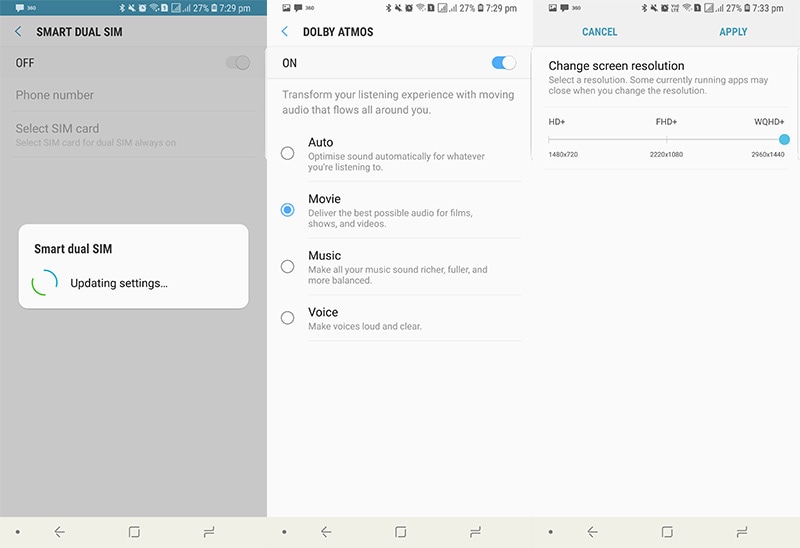Samsung Galaxy S9 and Galaxy S9+ design and build quality
Samsung Galaxy S9 and Galaxy S9+ specifications, software, and features
The Galaxy S8 and S8+ only recently began receiving the Oreo update, only to be halted due to a software glitch, which was thankfully sorted out a week later. The Galaxy Note 8, which was Samsung’s top-tier offering till just now, is yet to receive Oreo, which is a huge surprise. In contrast, Sony began issuing Oreo updates for its premium offerings back in October last year, while HTC did the same for the U11 a month later. Thankfully, both new phones are said to have support for Project Treble (Google’s solution to break the update bottleneck created by OEMs). Android P is right around the corner and, Samsung simply does not have an excuse to lag behind Google’s update cycle anymore.
Samsung Galaxy S9 and Galaxy S9+ performance, cameras, and battery life
Samsung Galaxy S9 and Galaxy S9+ Review
Samsung Galaxy S9 and Galaxy S9+ specifications, software, and features
Samsung Galaxy S9 and Galaxy S9+ performance, cameras, and battery life
240fps slow-motion video can now recorded at 1080p rather than 720p, which is a welcome bump in quality. However, the main attraction is a brand new super slow-mo mode which can shoot short bursts of video at 960fps. This is similar to what Sony did last year with the Xperia XZ Premium (Review), which used a stacked image sensor to capture 0.2 seconds of footage and stretched that to six seconds, thus giving you a super-slow-motion effect. The resolution for 960fps videos is only 720p, and you can choose to have either a single slow motion shot, or take multiple bursts (up to 20 in a single file) when recording.
Verdict
Samsung hasn’t made any drastic changes to the Galaxy S9 and Galaxy S9+ compared to their predecessors, and the company didn’t really need to do much. Last year's design is still stunning, and now, it’s a little more polished. We’ve seen Apple do that with its iPhones for a couple of years at a stretch, so this is nothing new. If you really want to stand out, get either phone in the new Lilac Purple colour option.
Samsung hasn’t made any drastic changes to the Galaxy S9 and Galaxy S9+ compared to their predecessors, and the company didn’t really need to do much. Last year's design is still stunning, and now, it’s a little more polished. We’ve seen Apple do that with its iPhones for a couple of years at a stretch, so this is nothing new. If you really want to stand out, get either phone in the new Lilac Purple colour option.
- Good
- Excellent build quality and compact design
- Stereo speakers
- Good battery life
- Snappy all-round performance
- Very good rear camera
- Vivid HDR display









No comments:
Post a Comment